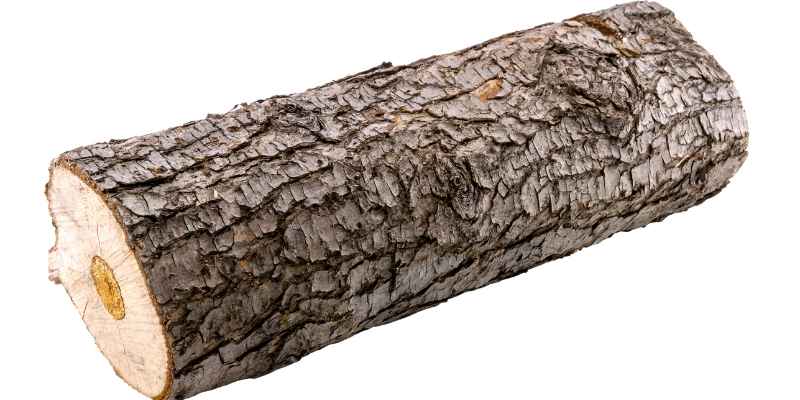Yes, you can build with palm tree wood due to its durability and versatility in construction. Palm tree wood is known for its strength and resistance to insects and decay, making it a suitable material for various building projects.
This type of wood is lightweight, making it easy to work with and ideal for constructing structures such as furniture, fences, and even small buildings. Additionally, using palm tree wood in construction projects can provide a unique aesthetic appeal, as it often features beautiful grain patterns and colors.
Whether used for decorative elements or structural components, palm tree wood can be a sustainable and attractive choice for builders and artisans alike.
The Versatility Of Palm Tree Wood
Palm tree wood is a versatile and sustainable material that can be used for construction. It is strong, durable, and resistant to pests and decay. With proper treatment and maintenance, palm wood can last for decades, making it an excellent choice for building structures and furniture.
Tropical Hardwood Characteristics
Palm tree wood is a tropical hardwood that possesses unique characteristics, making it a versatile material for various construction and design projects. Its durability, strength, and natural beauty make it an excellent choice for both indoor and outdoor applications. Unlike traditional lumber options like oak or pine, palm tree wood offers distinct advantages that set it apart in terms of versatility and sustainability.
Comparing Palm Wood To Other Lumber
When comparing palm wood to other types of lumber, it becomes evident that palm tree wood has several standout features. Firstly, its strength-to-weight ratio is exceptional, making it ideal for applications where a lightweight yet sturdy material is required. This characteristic makes palm wood particularly suitable for constructing structures such as treehouses, gazebos, and even lightweight furniture.
Additionally, palm tree wood’s resistance to moisture and decay sets it apart from many other lumber options. Its natural oils and dense grain structure make it highly resistant to rot, fungi, and insects. This makes palm wood an excellent choice for outdoor projects, such as decking, fencing, and pergolas, as it can withstand the elements and maintain its structural integrity over time.
Furthermore, palm tree wood’s unique grain patterns and rich colors add a touch of natural beauty to any project. Whether used for flooring, cabinetry, or decorative elements, palm wood’s distinct aesthetic appeal creates a warm and inviting atmosphere in any space. Its versatility extends to both modern and rustic designs, making it a popular choice among architects and interior designers.
In conclusion, the versatility of palm tree wood is undeniable. Its tropical hardwood characteristics, including its strength, durability, resistance to moisture and decay, as well as its natural beauty, make it an excellent option for a wide range of construction and design projects. Whether you’re looking to build a sustainable outdoor structure or add a touch of elegance to your interior, palm tree wood offers a unique and environmentally-friendly solution.
Historical Significance
The historical significance of palm tree wood spans centuries and cultures, playing a vital role in ancient construction and traditional uses across various societies.
Traditional Uses Across Cultures
In many tropical regions, palm tree wood has been utilized for crafting tools, furniture, and housing materials due to its durability and abundance.
Palm Wood In Ancient Construction
Ancient civilizations, such as those in Mesopotamia and Egypt, employed palm tree wood in the construction of structural elements, offering insights into its strength and versatility.
Sustainability Of Palm Wood
Palm wood is a sustainable building material that offers a plethora of environmental benefits. Its sustainability is a result of the renewability and rapid growth rate of palm trees, making it a popular choice for eco-conscious builders and homeowners.
Environmental Impact
Palm wood has a minimal impact on the environment due to the abundance of palm trees, which are a natural and renewable resource. Harvesting palm wood does not contribute to deforestation, making it an eco-friendly alternative to traditional timber. The use of palm wood also helps to reduce waste, as it repurposes the by-products of the palm oil industry.
Renewability And Growth Rate
The renewability of palm wood is attributed to the rapid growth rate of palm trees. Palm trees have a quick turnover, reaching maturity in as little as three to five years. This rapid growth allows for sustainable harvesting practices, making palm wood an environmentally responsible choice for construction.
Contemporary Uses Of Palm Wood

Palm wood is gaining popularity in contemporary designs due to its sustainability and unique aesthetic appeal. Building with palm tree wood offers a natural and eco-friendly alternative for furniture, flooring, and decorative accents in modern spaces. Its durability and exotic look make it a versatile choice for interior and exterior applications.
Innovative Building Projects
Palm tree wood is an eco-friendly and sustainable material that can be used in various innovative building projects. The strength and durability of palm wood make it ideal for building structures such as treehouses, bridges, and even entire homes. The unique texture and color of palm wood can also add a natural and rustic look to the building project. In addition, palm wood is resistant to decay, termites, and other pests, making it a reliable choice for long-term construction projects.
Furniture And Decorative Items
Palm wood can also be used to create beautiful and unique furniture and decorative items. The wood’s natural beauty and texture make it perfect for creating one-of-a-kind pieces that are both functional and aesthetically pleasing. Palm wood furniture can range from chairs and tables to cabinets and bookshelves. Decorative items such as bowls, vases, and picture frames can also be crafted from palm wood, adding a touch of natural elegance to any room.
Code Example:
| Item | Description |
|---|---|
| Treehouses | Treehouses made of palm wood offer a unique and natural experience for those who love the outdoors. |
| Bridges | Palm wood bridges are strong and durable, making them ideal for areas with heavy foot traffic. |
| Homes | Entire homes can be built using palm wood, creating a sustainable and eco-friendly living space. |
| Chairs and Tables | Palm wood chairs and tables can add a touch of natural elegance to any indoor or outdoor space. |
| Cabinets and Bookshelves | Palm wood cabinets and bookshelves offer a unique and rustic look for any room in the home. |
| Bowls, Vases, and Picture Frames | Decorative items made of palm wood can add a touch of natural beauty to any room. |
Palm Wood In Construction
Palm tree wood is a viable option for construction due to its durability and sustainability. With proper treatment and processing, it can be used for a variety of purposes including flooring, roofing, and even furniture.
Advantages For Building
Palm wood is a sustainable option for construction projects.
- Lightweight and easy to work with.
- Resistant to insects and fungi.
- Beautiful natural aesthetics for interiors.
Limitations And Considerations
Palm wood may be susceptible to moisture and rot.
- Requires regular maintenance to preserve longevity.
- Limited availability compared to traditional wood types.
- Specialized treatment may be needed for durability.
Processing Palm Wood
Palm tree wood is a sustainable and durable material that can be used for building. The process of processing palm wood involves drying and treating the wood to enhance its strength and longevity. With its unique grain and color, palm wood is an eco-friendly option for construction projects.
Palm tree wood has been used for centuries in various parts of the world to build homes, furniture, and other structures. The wood is known for its durability, strength, and unique texture, making it a popular choice for many builders. However, processing palm wood requires specific techniques to ensure the wood is usable and long-lasting.
Harvesting And Milling Techniques
Harvesting palm wood involves cutting down the palm tree and removing the branches and leaves. The trunk is then cut into logs that are transported to the sawmill. Milling palm wood requires specialized equipment due to the wood’s unique properties. The logs need to be cut carefully to avoid damaging the wood’s fibers, which can affect its strength and durability.
Treatment And Preservation
To ensure the palm wood lasts for a long time, it needs to be treated and preserved properly. One of the most common methods of treatment is kiln-drying, which removes excess moisture from the wood. This helps prevent warping, cracking, and decay. Another popular method of preservation is pressure treatment, which involves injecting chemicals into the wood to protect it from insects, fungi, and other pests.
In conclusion, processing palm wood requires specialized techniques to ensure the wood is usable and long-lasting. Harvesting and milling techniques need to be done carefully to avoid damaging the wood’s fibers, while treatment and preservation methods are necessary to protect the wood from decay and pests. By following these techniques, builders can create durable and beautiful structures using palm tree wood.
Creative Applications
Palm tree wood is a versatile material for creative applications. Its strength and durability make it suitable for building furniture, flooring, and even structural elements in construction projects. With its unique grain and natural beauty, palm wood offers a sustainable and eco-friendly option for various design and building needs.
Palm tree wood offers a versatile material for creative applications.
Art And Sculpture
Palm wood is used in making intricate sculptures and artistic pieces.
Specialty Items Made From Palm Wood
Palm wood is crafted into unique furniture, decor, and utility items.
In art, palm tree wood is valued for its natural beauty and durability.
Palm wood is popular for creating one-of-a-kind sculptures.
Specialty items like bowls, utensils, and jewelry are made from palm wood.
Future Of Palm Wood
Palm wood is gaining popularity for its sustainability and unique aesthetic appeal. As advancements continue in the utilization of this eco-friendly material, the future of palm wood looks promising.
Research And Development
Ongoing research is exploring innovative ways to enhance the strength and durability of palm wood for various construction applications.
Emerging Trends In Usage
The emerging trend of utilizing palm wood in eco-conscious construction projects is on the rise, offering a renewable and stylish alternative to traditional wood.

Frequently Asked Questions
Can Palm Tree Wood Be Used For Construction?
Yes, palm tree wood can be used for construction, particularly in tropical regions. It is known for its strength and versatility, making it suitable for various building purposes such as roofing, fencing, and even structural components.
What Are The Benefits Of Using Palm Tree Wood?
Using palm tree wood offers several benefits, including its natural resistance to pests and decay, making it a durable and long-lasting building material. Additionally, it is renewable, eco-friendly, and readily available in regions where palm trees thrive, contributing to sustainable construction practices.
Is Palm Tree Wood Suitable For Furniture Making?
Palm tree wood can be used for crafting furniture, especially in creating unique and exotic pieces. Its distinctive grain patterns and natural beauty make it an attractive choice for creating one-of-a-kind furniture items with a tropical aesthetic, adding character to interior spaces.
Conclusion
Palm tree wood can indeed be used for building purposes due to its unique properties. Its strength, durability, and resistance to insects and moisture make it a viable option for various construction projects. However, it is important to consider the environmental impact and sustainability of using palm tree wood, as it may contribute to deforestation.
Therefore, it is crucial to strike a balance between utilizing this resource and preserving our natural ecosystems. Ultimately, the decision to build with palm tree wood should be made responsibly, taking into account both its benefits and potential drawbacks.


